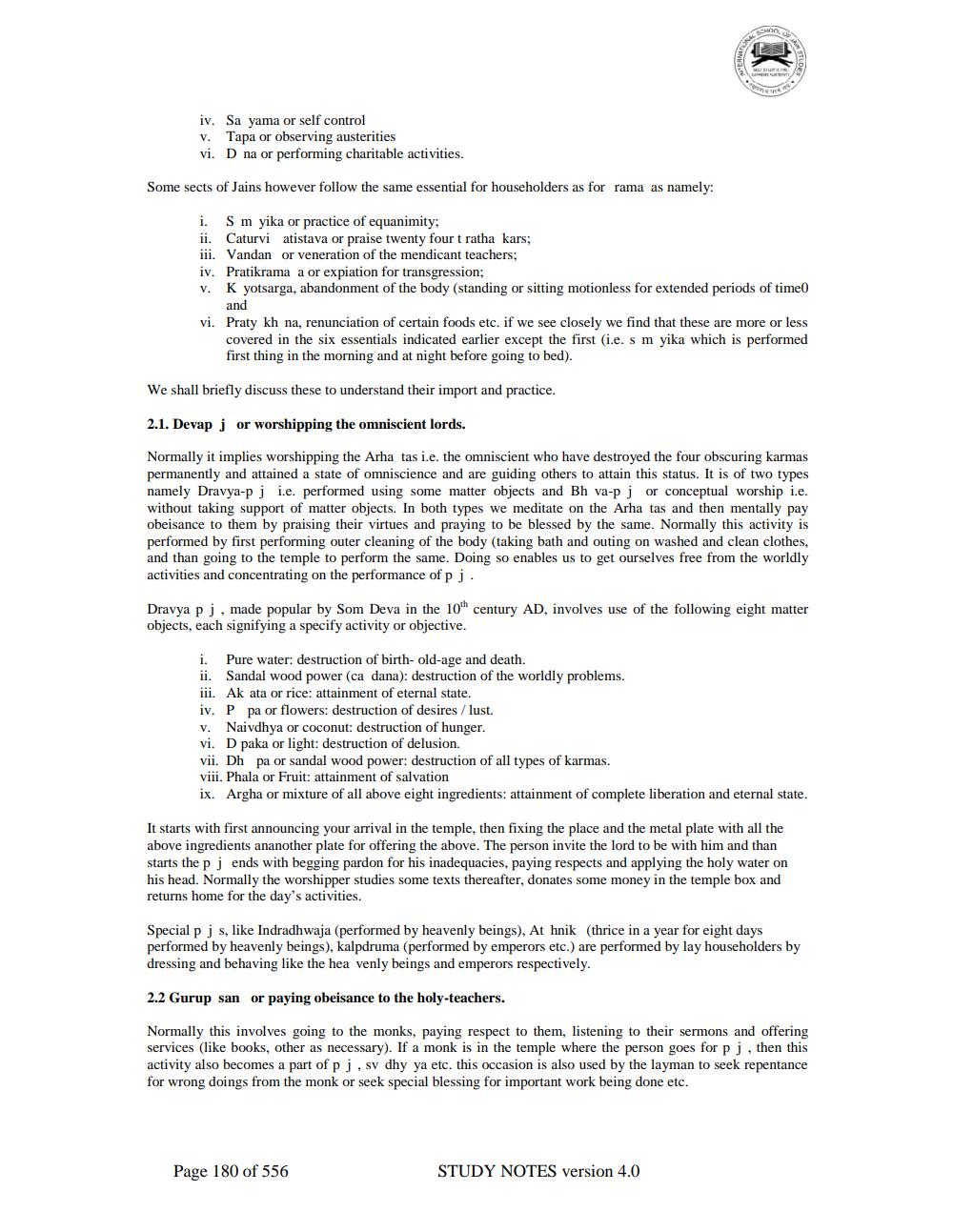________________
iv. Sa yama or self control v. Tapa or observing austerities vi. D na or performing charitable activities.
Some sects of Jains however follow the same essential for householders as for rama as namely:
i. S m yika or practice of equanimity; ii. Caturvi atistava or praise twenty four t ratha kars; iii. Vandan or veneration of the mendicant teachers; iv. Pratikrama a or expiation for transgression; v. K yotsarga, abandonment of the body (standing or sitting motionless for extended periods of time
and vi. Praty kh na, renunciation of certain foods etc. if we see closely we find that these are more or less
covered in the six essentials indicated earlier except the first (i.e. s m yika which is performed first thing in the morning and at night before going to bed).
We shall briefly discuss these to understand their import and practice.
2.1. Devap j or worshipping the omniscient lords.
Normally it implies worshipping the Arha tas i.e. the omniscient who have destroyed the four obscuring karmas permanently and attained a state of omniscience and are guiding others to attain this status. It is of two types namely Dravya-p j i.e. performed using some matter objects and Bh va-p jor conceptual worship i.e. without taking support of matter objects. In both types we meditate on the Arha tas and then mentally pay obeisance to them by praising their virtues and praying to be blessed by the same. Normally this activity is performed by first performing outer cleaning of the body (taking bath and outing on washed and clean clothes, and than going to the temple to perform the same. Doing so enables us to get ourselves free from the worldly activities and concentrating on the performance of p j.
Dravya p j, made popular by Som Deva in the 10th century AD, involves use of the following eight matter objects, each signifying a specify activity or objective.
i. Pure water: destruction of birth-old-age and death. ii. Sandal wood power (ca dana): destruction of the worldly problems. iii. Ak ata or rice: attainment of eternal state. iv. P pa or flowers: destruction of desires / lust. v. Naivdhya or coconut: destruction of hunger. vi. D paka or light: destruction of delusion vii. Dh pa or sandal wood power: destruction of all types of karmas. viii. Phala or Fruit: attainment of salvation ix. Argha or mixture of all above eight ingredients: attainment of complete liberation and eternal state.
It starts with first announcing your arrival in the temple, then fixing the place and the metal plate with all the above ingredients ananother plate for offering the above. The person invite the lord to be with him and than starts the p j ends with begging pardon for his inadequacies, paying respects and applying the holy water on his head. Normally the worshipper studies some texts thereafter, donates some money in the temple box and returns home for the day's activities.
Special p j s, like Indradhwaja (performed by heavenly beings), At hnik (thrice in a year for eight days performed by heavenly beings), kalpdruma (performed by emperors etc.) are performed by lay householders by dressing and behaving like the hea venly beings and emperors respectively.
2.2 Gurup san or paying obeisance to the holy-teachers.
Normally this involves going to the monks, paying respect to them, listening to their sermons and offering services (like books, other as necessary). If a monk is in the temple where the person goes for p j , then this activity also becomes a part of pj, sy dhy ya etc. this occasion is also used by the layman to seek repentance for wrong doings from the monk or seek special blessing for important work being done etc.
Page 180 of 556
STUDY NOTES version 4.0




